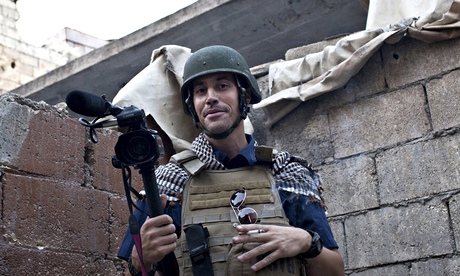
With depressing frequency in this summer of diverse horrors, we hear tales of desperate human misery, suffering and depravity – and because we live now in an era where virtually every phone is a globally connected camera, we are confronted with graphic evidence of tragedy.
The footage of the apparent beheading (to refer to the atrocity as an execution serves only to lend a veneer of dignity to barbarism) of the US photojournalist James Foley at the hands of a British Isis extremist has raised particularly strong feelings.
Social networks are banning users who share the footage. Newspapers are facing opprobrium for the choices they make in showing stills or parts of the video. Others, of course, will seek out the video after seeing the row, or else post it around the internet in a juvenile form of the free speech argument.
Before considering the rights and wrongs of the position, there is one fact we should face: we are presented with images of grotesque violence on a daily basis. Last month the New York Times ran on its front page the dead and broken body of a Palestinian child.
Like Foley, that child was someone’s son, someone’s brother, someone’s friend, and in a connected world there is just as much chance his family saw the photo and its spread as Foley’s will see the latest awful images of their loved one.
That photo raised little controversy in comparison to the use of images of Foley. Photos of groups of civilian men massacred by Isis across Iraq and Syria – widely shared on social media and used by publications across the world – caused no outcry whatsoever.
It’s hard to look at that and not see a double standard: like many other courageous and talented people, Foley had chosen to travel to the region, and knew the risks that entailed. Others were killed simply fleeing their homes. In a strange and bitter irony, one of the duties of photographers such as Foley is documenting bloodshed in order to show the world.
To see an outcry for Foley’s video and not for others is to wonder whether we are disproportionately concerned over showing graphic deaths of white westerners – maybe even white journalists – and not others.
That’s not to say there aren’t good reasons for outlets to think hard when selecting what, if anything, from the footage they should show. Foley’s apparent beheading was released not at the editorial decision of a photojournalist, but as a propaganda tool by thugs. Outlets should consider whether they are furthering or challenging such aims when they use such images.
There is also simple human decency, and the difficult trade-off of not insulating comfortable western audiences from the world’s horrors, while not needlessly causing a dead person’s loved ones additional suffering by showing gratuitously violent imagery.
The Guardian’s stance on Foley is a demonstration of the fine balance of those decisions: at present, one image of Foley from the video is used, but not as a lead picture. None of his forced speech is portrayed, and the short audio elements from the video – some of his murderer’s speech – have been used against a still image.
But more relevant by far is the choice each of us makes about whether to view the many horrifying real-life murder videos that circulate the internet. Before clicking, serious self-examination is required: why do you want to see this? Do you need to see it to understand something important? Still deeper self-examination should certainly be engaged before even contemplating sharing such material.
It’s that self-examination, or self-censorship, that best serves ourselves. As individuals, we’re making very different decisions to publishers and news outlets, but we should trust our own judgment rather than rush to ask social media companies to become the arbiters of our free expression on a knee-jerk basis.
There is a coda to this tale, another aspect of James Foley’s life that is also being shared far and wide across the world. It is the short statement by his mother, released on his Facebook page.
“We have never been prouder of our son Jim. He gave his life trying to expose the world to the suffering of the Syrian people,” her statement began.
It has already been shared more than 2,500 times. This is how we win: not by suppressing the worst of us, but by sharing and saluting the best – people such as Foley and his family.

